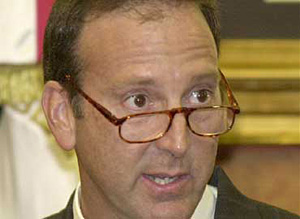 |
 |
 |
 Editorials | Environmental | October 2007 Editorials | Environmental | October 2007  
Protecting Mexico's Natural Resources
 PVNN PVNN


| | Ambassador Antonio O. Garza |
Statement by Ambassador Antonio O. Garza at the Parks in Peril event with the Nature Conservancy, CONANP and SEMARNAT in Mexico City on October 15, 2007:

The U.S. government is committed to bilateral cooperation on environmental issues with Mexico. Today I am pleased to announce an additional $5 million dollars to support conservation, forestry, and global climate change programs this year. These new activities complement ongoing efforts focusing on renewable energy, pollution reduction, watershed management and community conservation.

Parks in Peril is one of the most successful joint programs that we have supported over the past 17 years. It is also among the largest and most ambitious international conservation programs in the world. In 17 countries, across 40 million acres, 45 priceless ecosystems have been protected. Ten of these protected areas are in Mexico.

I am very honored this afternoon to participate with the Secretary of the Environment and Natural Resources, Juan Elvira Quesada; President of the National Commission for Protected Areas, Dr. Ernesto Enkerlin; Director of the Mexico Program for The Nature Conservancy, Rosario Alvarez; and Program Manager for the Parks in Peril, Dr. Jim Reiger in commemorating this enormous endeavor.

In Mexico, the U.S. government, through its Agency for International Development (USAID), invested over $14 million dollars to enhance the capacity of ten national protected areas to manage their own resources. Protected areas, including Cuatro Ciengas, and the Sian Ka'an and El Triunfo Biosphere Reserves, received assistance to train staff, define conservation and social development policies, and to create financial mechanisms to sustain local management of these areas. Local communities learned to integrate the protected areas into their economic and cultural lives.

Since its inception in 1990, the Parks in Peril program worldwide has received $74 million dollars in funding from the United States government through USAID, matched by nearly $27 million dollars raised by The Nature Conservancy and its partner organizations. | 
 | |
 |



